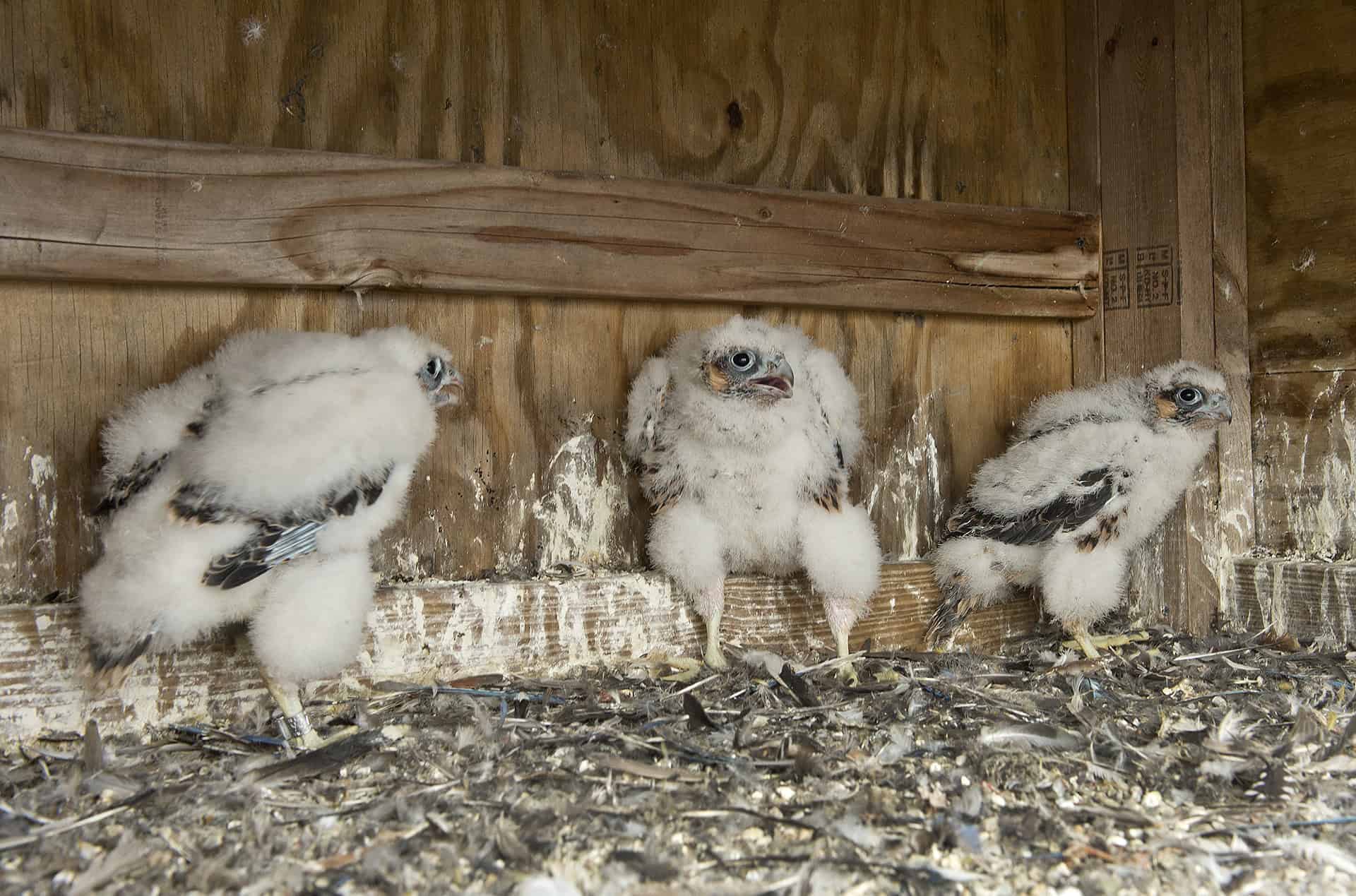Meet University of Pittsburgh’s new residents: Peregrine falcon chicks
Three peregrine falcon chicks at the University of Pittsburgh were banded by the Pennsylvania Game Commission, aiding scientific tracking of their life history.
High above Pittsburgh’s skyline, a unique wildlife conservation effort took place on May 21st as three peregrine falcon chicks received their first form of identification. The young birds, born to parents Carla and Ecco who nest at the University of Pittsburgh‘s Cathedral of Learning, underwent an important banding procedure that will help scientists track their lives and movements for years to come.

Tracking the next generation of urban falcons
The Pennsylvania Game Commission conducted the banding operation, carefully removing the chicks from their nesting box for a comprehensive health assessment. Endangered bird biologist Patti Barber—equipped with protective gear including a hard hat, safety goggles, and gloves—transported the young falcons to a nearby conference room on the Cathedral’s 40th floor.
Each chick received two distinctive bands: an aluminum band with a unique tracking code registered with the U.S. Geological Survey’s Bird Banding Laboratory, and a green and black band featuring a shorter code for easy visual identification. These markers will enable researchers to gather crucial data about the birds’ lifespans, breeding patterns, and migration distances from their birthplace.
Urban adaptation of a wild species
The Cathedral of Learning has proven to be an ideal urban habitat for peregrine falcons, with its towering height mimicking the cliff faces these birds traditionally choose for nesting in the wild. The building’s location near Schenley Park and the abundant local pigeon population provides excellent hunting opportunities for the parent birds and their offspring.
This nesting site has a rich history dating back to 2001 when Dorothy and Erie became the first peregrine falcon pair to make the Cathedral their home. The current residents, Carla and Ecco, are continuing this legacy, contributing to the species’ presence in Pittsburgh’s urban landscape. To see more of these fluffy urban raptors, you can check out the Peregrine FalconCam.
This article may have been created with the assistance of AI.



